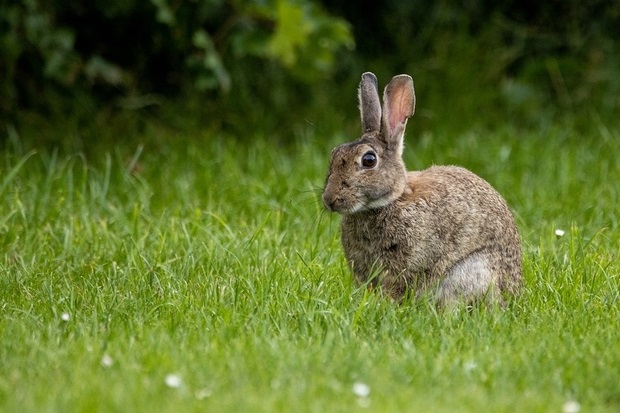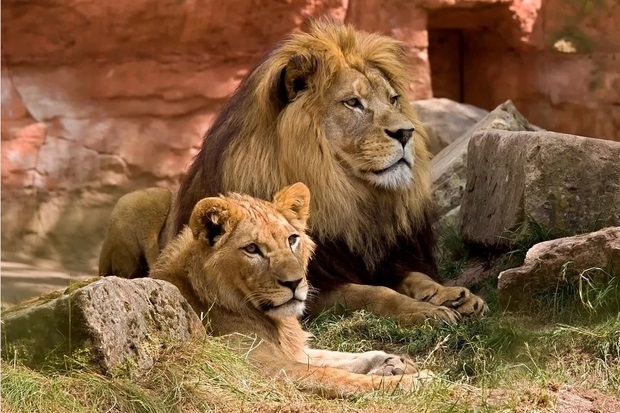
In this blog, we hear from APHA’s Professor Richard Delahay, a Wildlife Biologist at the National Wildlife Management Centre, as he talks about the fascinating work being carried out on the potential role of wildlife in the epidemiology of SARS-CoV-2.
Infection of animal populations
The global coronavirus pandemic is a disease event of unprecedented scale. As I write, the World Health Organisation Dashboard indicates that over 117 million people have been infected worldwide. Since the onset of the pandemic, there have been many instances of human-to-animal transmission, mostly involving pet dogs and cats, but with some cases in zoos and mink farms too.
As these events unfolded last year and as evidence emerged from experimental studies, it became clear that it would be important to consider whether infection might also spread from people to free-living wildlife and what the implications of this might be for public and animal health. As a wildlife biologist working on the management of disease in wild animal populations it struck me that these were critical questions and so together with several of my APHA and external colleagues, we set about the task of pulling together any existing evidence that might help us to find some answers.
The origins of the pandemic are not well understood, and although a cluster of initial human cases were associated with a seafood market selling live wild animals in Wuhan, China, other early cases were not. The closest known ancestor of SARS-CoV-2 (the virus that causes COVID-19 in people) is consistent with the virus having emerged from wildlife, although the species responsible for spillover to people is unknown.
Since many coronaviruses can infect a range of species it was always going to be the case that this virus would, at some point, spillback into non-human animals. The most concerning examples of this to date have been the many cases of infection on mink farms abroad (mink farming has been banned in the UK for over 20 years) where initial introduction by an infected worker led to circulation amongst the captive animals and limited transfer back to humans. So it is clear that the infection of animal populations could have implications for the control of COVID-19 in humans.
Susceptible wild species
The establishment of infection in wild animal populations would be particularly problematic because controlling diseases in wildlife is so much more challenging than in captive and domestic animals. Clearly the best way to prevent the need for this is to minimise the opportunities for human to wildlife transmission in the first place. Such measures are an important first line of defence, but given the burden of infection in the human population it would also be prudent to identify those wild animal species most at risk of exposure, and in which the virus could become established and might pose a future risk of re-infecting people.
As a first step this would require critical appraisal of the existing evidence base to inform plans for surveillance which could be updated as new information emerged. So began the painstaking task of sifting through the plethora of emerging scientific studies and case reports on SARS-CoV-2 in animals for clues as to potentially susceptible wild species.
Information we examined for clues on susceptibility to the virus included predictions based on the characteristics of the host protein (ACE2) that the virus binds to, and experiments on animal cell lines modified to express this protein. The results of such studies cannot confirm susceptibility but they can help to narrow down the field of possible candidates. For SARS-CoV-2, these approaches suggest a wide variety of potentially susceptible species including bats, rodents, cetaceans (an order of aquatic mammals), carnivores and primates.
Another source of useful information are experimental infections, often carried out on animals to further our understanding of the disease in humans. These studies have demonstrated susceptibility to infection in several species including dogs, cats, fruit bats, Syrian hamsters, ferrets, deer mice and macaques, and in some cases (such as ferrets, racoon dogs, cats, fruit bats and white-tailed deer) have confirmed within species transmission of the virus. But these experiments do not necessarily mimic natural conditions under which wild animals might be exposed to the virus. That is why information on naturally acquired infections, such as those found in pet dogs and cats, in big cats and gorillas in zoos and in farmed mink, are so important.

Pathways of transmission
Few people have direct contact with wild animals and so most opportunities for transmission to wildlife are likely to be via domestic and captive animals which may have been infected by people and subsequently come into contact with wild animals. A recent report of SARS-CoV-2 infection in free-living mink in the vicinity of a mink farm in the USA is a case in point, as escaped animals provide a potential pathway to the infection of wild mink in the area. Nevertheless, pathways involving direct transmission from infected people to wildlife might arise as a result of some ‘high risk’ activities such as wildlife management, conservation, veterinary and research activities that involve handling or close proximity to susceptible species. As a result several organisations have issued comprehensive guidance on what precautions can be taken.
Clearly it is neither possible nor necessary to carry out surveillance for SARS-CoV-2 infection in all wild mammal populations, as many species may not be susceptible and many populations would in any case be unable to maintain the virus, perhaps because of their solitary lifestyles or scarcity. Although many viruses can switch between species, the behaviour, social organisation and population characteristics of the host will be critical in determining whether they can sustain the infection. By using our combined knowledge of host susceptibility and ecology we can start to identify those species that might be of most potential concern and which would therefore be worth keeping an eye on.
It is important to note that at the current time there is no evidence that wildlife are playing a role in the ongoing pandemic, but if recent experience has taught us anything, it is the value of being prepared.
APHA is well placed to help meet the challenge of examining the potential role of wildlife in the epidemiology of SARS-CoV-2, given the wealth of internal expertise in ecology, virology, pathology, epidemiology, disease modelling and risk assessment. Together with colleagues from the international research and veterinary community we have produced a manuscript which discusses the points raised here. Unsurprisingly, owing to the rapidly evolving situation this work will be subject to further updates as new evidence emerges, some of which we hope to arise from research that APHA teams are currently engaged in.
Further reading

2 comments
Comment by Ian Brown posted on
Great article Richard highlighting the important role APHA covers in this space. A dynamic situation to watch....
Comment by Rudolf Reichel posted on
Very interesting and well written and researched.